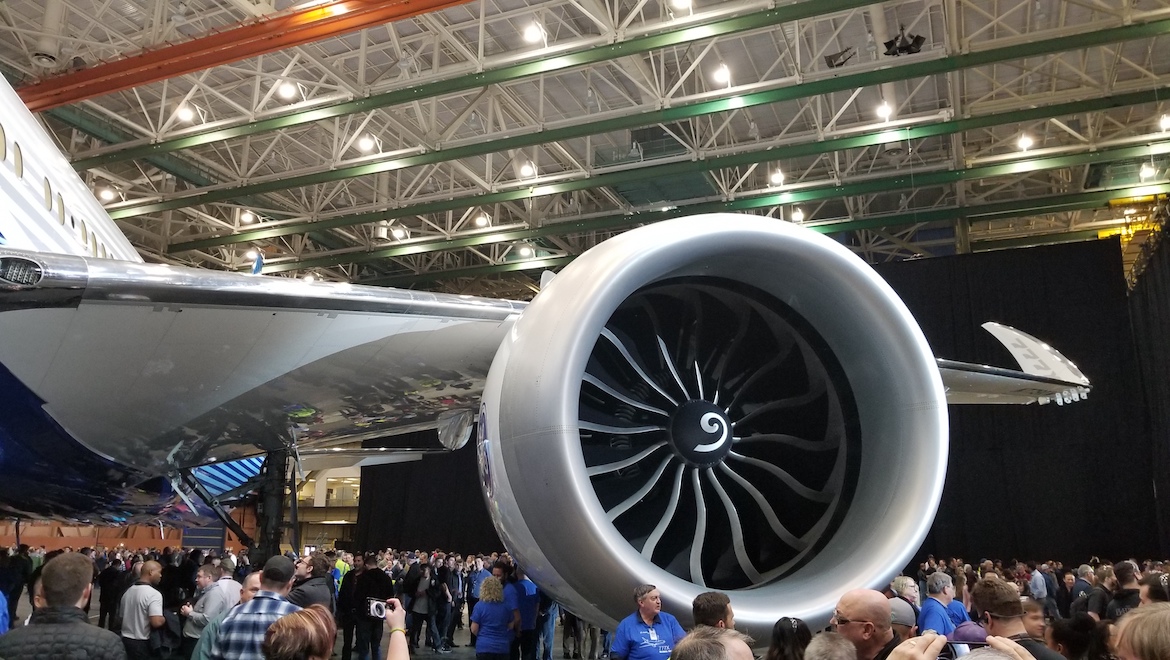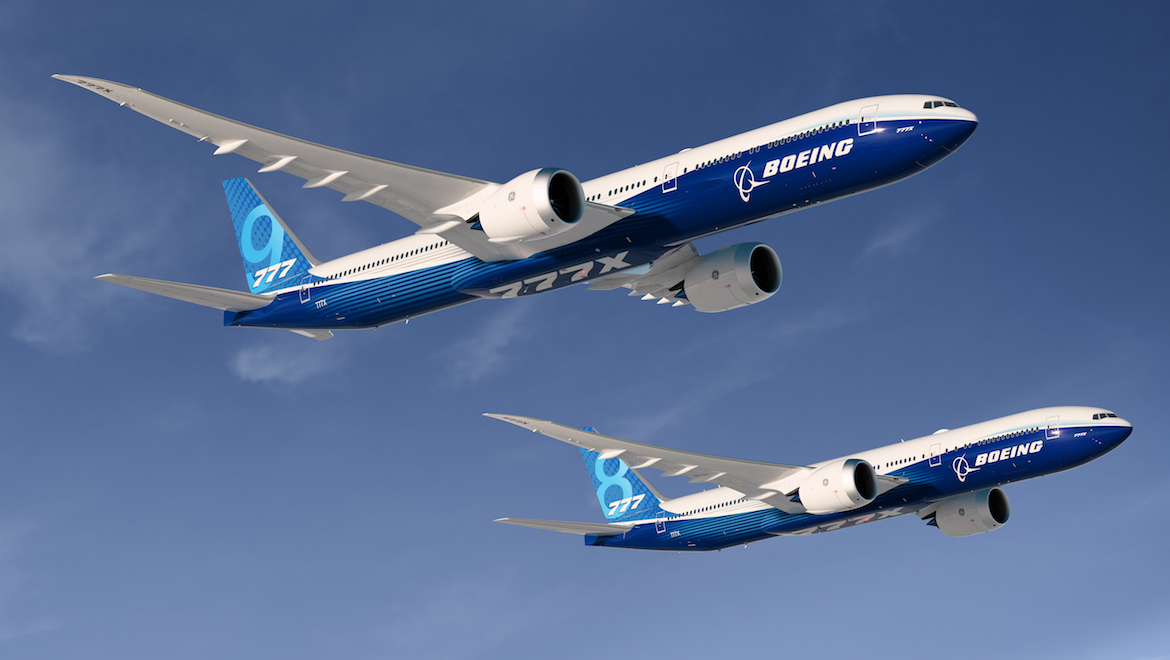
A Boeing 777-9X test aircraft has moved under its own power for the first time ahead of anticipated flight tests expected to commence later in 2019.
The 777-9X aircraft has been put through a series of low-speed taxi tests at Boeing’s Everett facility, the company said in a post on its social media channels on Friday (US time).
“This is one of many tests before the 777X takes to the skies later this year,” Boeing said.
https://www.facebook.com/Boeing/videos/vb.115537125141500/450911565455572
The rollout of the first 777-9X took place at a staff-only event at Everett in March 2019. Boeing has two test 777-9X aircraft on the ground at its Everett facility just outside Seattle in Washington State. Meanwhile, a further two 777-9X aircraft were in final assembly.
Aviation watchers at Everett also posted images and video of the low-speed taxi tests on social media:
More #777X WH001 taxi action this afternoon at Paine Field. pic.twitter.com/JWom6woa6H
— Jennifer Schuld (@JenSchuld) June 20, 2019
The first 777x WH001 has taken to the runway for the FIRST TAXI & BRAKE TEST!!
FOLLOW: @B777XLOVERS FOR MORE
Tags: #GE9X #B77W #b777xlovers #777X #boeing777lovers #B777X #planespotting #aviationlovers #aviationphotography #aviationpictures #aviationpic #aviationphoto #b777x pic.twitter.com/KV2JPa1NEm
— Boeing 777X (@b777xlovers) June 21, 2019
There was an expectation Boeing has been targeting a June first flight for the 777-9X, the first of two models in the 777-X family of aircraft. However, an anomaly was discovered in the GE Aviation GE9X engine’s compressor during tests.
Boeing chief financial officer Greg Smith said recently the 777-9X was still on track to begin flight tests later in 2019 despite the need for some re-testing work on the GE9X engines.
Speaking at the UBS Global Industries and Transportation Conference in New York on June 5, Smith described the GE9X as the “long pole in the tent right now”.
“There’re some challenges. They’re working through their own testing. So we’re having to do some retesting. And they’re working their way through that,” Smith said, according to a transcript published on the Boeing website.
“As we see it today, we still expect to fly this year and entry into service in 2020, but obviously we’re staying very close to that and we’ll keep you up-to-date of that changes, but that’s still the current assumption.”

The 777-X is a two-aircraft family
Launched in 2013, the 777-X family of aircraft comprise the 777-8X and 777-9X variants. The pair is an upgrade from Boeing’s in-production 777-200LR and and 777-300ER.
In addition to the new GE Aviation GE9X engines, features of the 777-X family included composite wings with folding wingtips to maintain its Code E rating at airports, as well as in-cabin enhancements such as larger overhead stowage and a wider cross section.
The first aircraft in production is the 777-9X, which is 77 metres in length, has a total wingspan of 72 metres with its wingtips extended and is capable of flying 7,285nm when carrying 426 passengers in a two-class configuration, according to Boeing figures.

It has been pitched as the ideal replacement for the very large aircraft segment of the market, especially in light of Airbus’s decision to cancel the A380 program.
Boeing is also building the 777-8X, which is still in development. The Boeing website lists the aircraft as having a range of 8,690nm and a passenger capacity of 384 passengers in a two-class layout. The aircraft was expected to enter service in 2022.
The 777-8X was regarded as a potential replacement for the in-service Boeing 777-300ER. It is also a candidate for Qantas’s Project Sunrise challenge to Airbus and Boeing to have an aircraft capable of operating nonstop between Australia’s east coast and New York and London.

Airbus’s candidate is the A350 platform.
The 777-X program, which had received 344 orders at May 31 2019 according to the Boeing website, is up against the A350-1000 in the very large aircraft segment of the market.
Airbus chief commercial officer Christian Scherer has previously touted the weight savings present in its next-generation A350 widebody versus the 777 derivative.
Speaking to reporters at the recent Airbus Innovation Days briefings in Toulouse in May, Scherer said the A350-1000 had 45 tonnes less takeoff weight than the 777-X and described the Boeing twin as “that re-engined Hummer”.
“The A350 is the most modern aircraft out there in the long-haul sector,” Scherer said on May 21.
Figures from the Airbus website showed the A350-1000 had received 180 orders at the end of May 2018. There have been 21 aircraft delivered.
VIDEO: A October 4 2018 video from the Boeing Livestream page that looks at the 777-X’s folding wingtips.
















Craigy
says:It appears that Emirates is in the process of renegotiating its order mix for the B777x. If they swap out the 8 for 787’s, word is development of the 8 will be delayed according to the Seattle Times as the Emirates order accounts for about 45% of all orders (I think the 45% is correct, please correct me if I am wrong). This has implications for Qantas and Project Sunrise. Although a win for Boeing could attract additional orders from other airlines such as United who have apparently been watching the Project Sunrise proposals very closely. The next few months are going to be interesting.